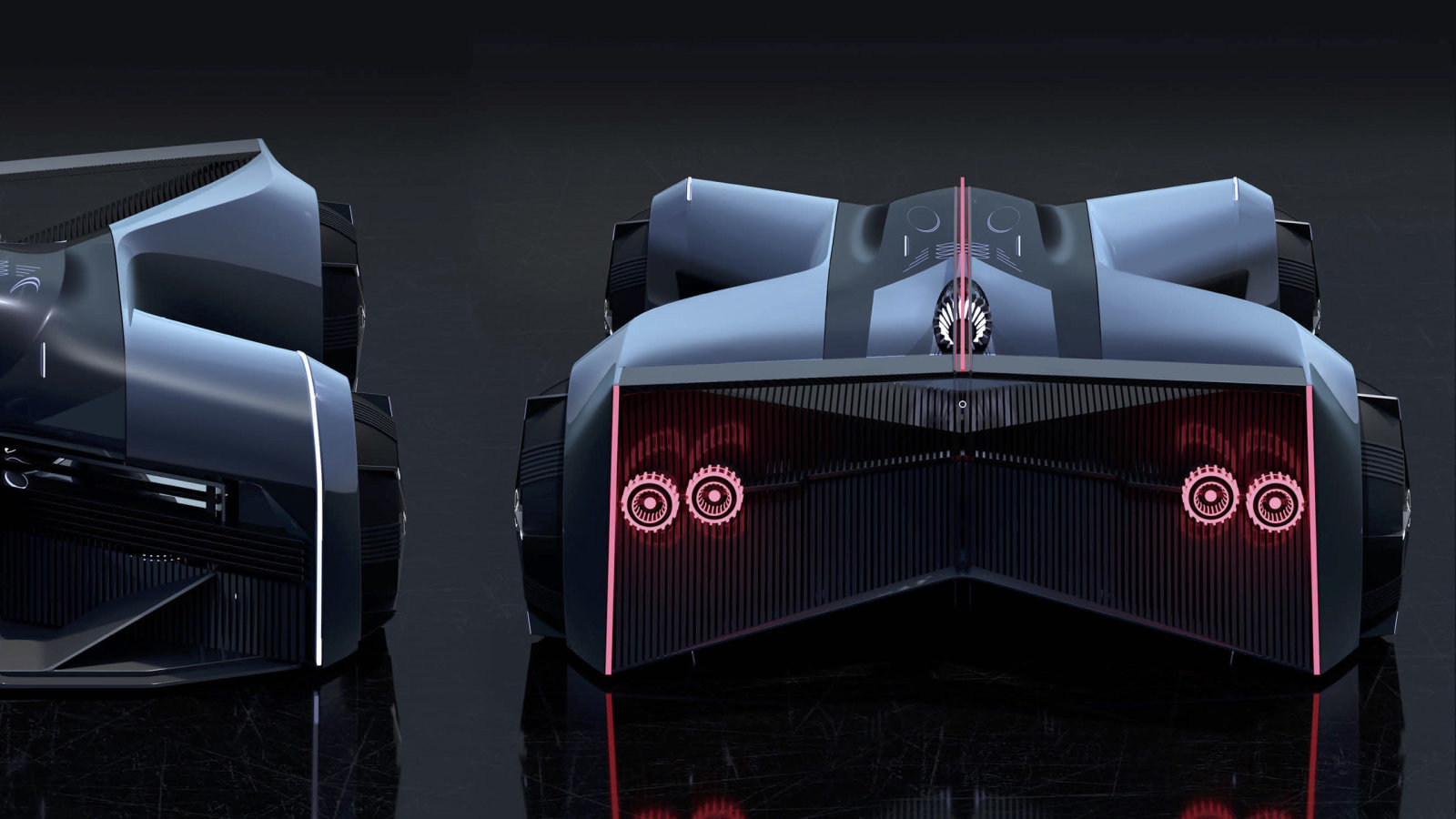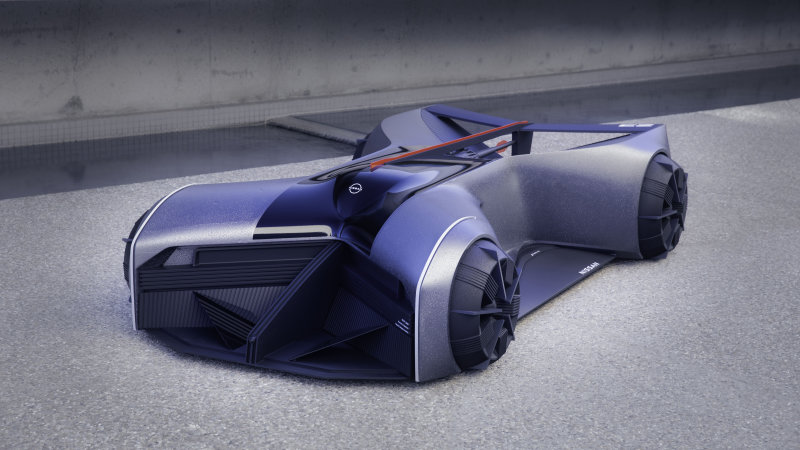Most of our Nissan GT-R’s thinking these days goes to what the R36 has in store. Nissan is here thinking about what the GT-R will look like in 2050. If we continue with the pace of production of the R35, it could still be the R36. We’re kidding, but hey, the R35 has been on the market for over a decade now and the end is not yet in sight.
In response to what the future of Nissan performance looks like, Nissan has brought an intern’s graduation project to life. It’s called GT-R (X) 2050, and it’s a fresh look at our dystopian sports car future. Jaebum Choi, a former student at the ArtCenter College of Design in Pasadena, California, set out to design a vehicle for enthusiasts in the era of self-driving cars (whenever that may be). Rather than leaving the project on paper and computer renderings, Nissan Design America decided to bring it to life in the form of an official Nissan concept vehicle.
The GT-R (X) 2050 is a small car – two feet high and three meters long – intended for one person only, and most of the details require some imagination. To begin with, the driver ‘sits’ in the car in the prone position, lying on the stomach with the limbs in an X position. The exterior design aims to mimic the body in this position, which explains why it looks like an X from an aerial perspective. Of course, some GT-R elements have also been thrown in. The signature quad-circle taillights are in the rear. It uses a very wide plate-shaped design like the R35, and the V-Motion front-end style is noticeable from the start. The rest of the vehicle has a very weak grip on what we might typically imagine a vehicle.
The driver ‘sees’ outside through a special VR helmet that you connect to the extensive camera system of the car. There is one window, but it is at the top with no forward view. Nor is it a fully autonomous vehicle. Choi told the media in a presentation that he envisions drivers steering via controls operated by moving your hands and arms spread outward. You are supposed to ‘carry’ the car in such a way that it feels like an extension of the body.

“Exoskeletons nowadays make people stronger by wearing mechanical structures. I tried to look after a person’s body as much as possible, as if I were carrying a car, ”explains Choi.
As for its operation, Choi says he was inspired by Iron Man when he envisioned a power source of the “arc reactor” type. This would create electricity for the engines. Nissan hasn’t provided performance figures, probably because the powertrain is far too vague to even make any prediction. Since it is a GT-R concept, it has to be extremely fast. Choi says it’s meant to provide more support than a superbike, but not much more than that. All design priorities are geared towards making it an enjoyable and fun time for the operator.
You might be wondering what the wild looking wheels are, and Choi has an answer for that too. The wheel / tire combination is a one-piece unit that, due to its shape, allows the car to rotate 360 degrees. The design is intended to allow the wheel to cool quickly when driving fast. It even has an active wing that pops up to promote more downforce.
We continue into fantasy land with Nissan’s Brain-to-Vehicle technology shown at CES a few years ago. Choi believes the GT-R (X) 2050 would use this technology that interprets signals from the human brain to make the vehicle an even better self-driving car than regular computerized ones. But you wouldn’t be forced to use autonomous mode all the time.
“Choi essentially envisions a new mode of transportation that people could experience as clothing, ‘wearable’, rather than a traditional ‘car,’ said David Woodhouse, VP Nissan Design America (NDA).“ It’s the kind of groundbreaking thinking that has always been encouraged here at NDA. We are honored to help bring Choi’s vision to life. ”
Related video:
